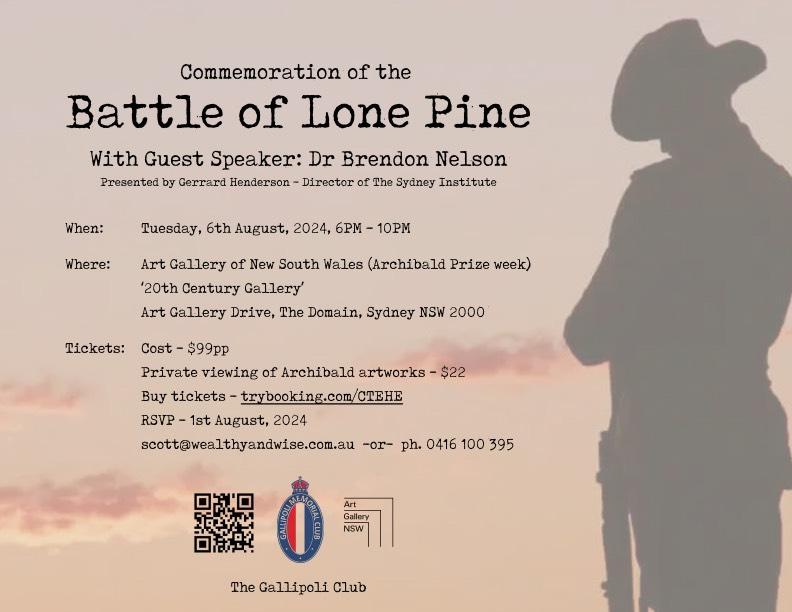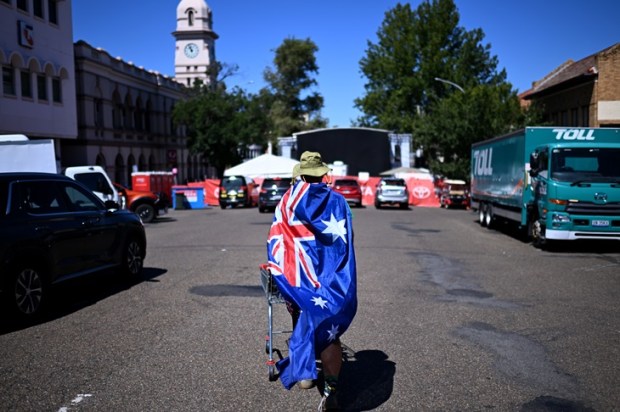In an obscure cove, on an unknown beach, in a foreign land far-far away, on the morning of the April 25, 1915, our national identity was forged in blood.
The legend of the Anzac was born on this day, and it is arguably the most important and sacred day of remembrance in our nation’s history.
This spirit was reaffirmed in the continued eight months of fighting on the Gallipoli peninsula. Although arguably a military disaster, the Australians displayed great courage, endurance, initiative, discipline, and mateship. These qualities came to shape the Anzac spirit as we know it today.
The story of the Gallipoli landing not just inspired the legend of Anzac, but it still remains, central to many Australians’ self-image.
Before the war, a largely urbanised and newly federated nation had looked to its rural environment for its national character. The ‘bushmen’, and their women, were seen to possess hardiness, democratic spirit, mateship, and resourcefulness.
In 1914, most Australians had high hopes that their soldiers would prove the nation’s worth. These hopes were realised in the colourful descriptions of their men in action following the landing at Gallipoli. The bushmen’s perceived characteristics were now applied, along with dash and courage in battle, to the Anzac stereotype. These were soon extended to those who served on the Western front, where the term “digger” was also born and used to describe our Australian soldiers.
‘The mettle that a race can show
Is proved with shot and steel,
And now we know what nations know
And feel what nations feel.’
A.B. ‘Banjo’ Paterson
There are so many stories of gallantry during these dark years but none more important than The Battle of Lone Pine.
The first world war started on July 28, 1914, when Austria-Hungary declared war on Serbia.
The United Kingdom entered the first world war on August 4, 1914.
Australia, as a dominion of the British Empire, was automatically also at war.
Just over a year later, at 05:30 pm on August 6, 1915, the Battle of Lone Pine began. It lasted four days.
It was a very different time.
In the words of Private James Smith 3rd Battalion, a 21-year-old printer from Hurstville (a suburb of Sydney), the battle unfolded thus:
6th August, 5 o’clock. The bombarding is terrible now. We charge in half an hour. My thoughts are of home. I wonder will I live through. I have a big lump in my throat.
6th August 5.25. Five minutes and we charge.
8th August. We had terrible losses in the charge. I am still alive but very full of the sights I have seen these last two days.
9th August. Cannot write, Turks are attacking.
10th August. Stopped (at) one this morning at 6 o’clock, leave here tonight for England.
The Battle Of Lone Pine took place on the Gallipoli Peninsula, then a part of the Ottoman Empire, now Turkey, and was a part of an overall invasion by Allied forces.
It is located in the southern part of East Thrace, also known as Turkish Thrace or European Turkey. It is the little skinny bit of Turkey that is geographically a part of Southeast Europe.
Bordered by the Aegean Sea to the West and the Dardanelles Strait to the East is about 60 kilometres long and no more than two kilometres wide at any given point.
Istanbul is 203 kilometres.
Sydney, Australia, is 15,374 kilometres away on the other side of the world.
Auckland, New Zealand, is 17,499 kilometres away as the crow flies. Also, on the other side of the world.
The Lone Pine battleground was approximately the size of two football pitches. The width of the front of the attack was 150 metres. The distance between the two trench lines was about 55 to 90 metres with a flat, ‘no-man’s land’ in-between.
The terrain in the Lone Pine region was relatively gentle. The ridges were once covered with Aleppo Pine Trees the Turkish troops however had chopped them down and used them to cover their trenches leaving only one lone pine standing.
That tree was sometimes referred to by the Anzacs as ‘The Lonesome Pine’.
The Battle of Lone Pine was fought between Australian and New Zealand Army Corps (Anzac) and Ottoman Empire Forces.
The Ottoman Empire (which became the Turkish Republic in 1922) fought for the Central Powers: Germany, Austria-Hungary, Bulgaria, and the Ottoman Empire against the Entente Powers: Great Britain, France, Russia, and Serbia.
Recruiting offices opened at army barracks around Australia. Thousands of men volunteered. By the end of 1914, 52,561 had enlisted.
They came from all walks of life. Printers, company secretaries, fitters and turners, miners, shopkeepers, mechanics, and school teachers.
When they departed Australia they had little, or no idea of what lay before them. The harsh, tragic, and brutal realties of war would however, galvanise these raw recruits and officers into a formidable fighting force. They displayed levels of courage, ingenuity, endurance, and support for their mates that became hallmarks of the Australian character.
Specifically, it was the Australian 1st Infantry Brigade that was selected to undertake the attack on Lone Pine. It comprised of about 3,000 men under the command of a British officer, Colonel Nevill Smyth.
The Ottoman forces opposing the Australians consisted of two battalions of about 1,000 men from the 47th Regiment, under the command of Tevfik Bey. Positioned in reserve was a battalion from the 57th Regiment. Positions North and South of the Ottoman line at Lone Pine were the 125th Regiment at Johnston’s Jolly in the north and the 48th Regiment in the south along Pine Ridge.
Ottoman troops fighting against Anzac forces were estimated to number of 1,000.
To book tickets to the Commemoration of the Battle of Lone Pine, click here.

The Ottoman Empire was created by Turkish tribes in Anatolia and grew to be one of the most powerful states in the world during the 15th and 16th Centuries. The Ottoman period spanned more than 600 years and came to an end in 1922 when it was replaced by the Turkish Republic.
The human history of Australia began over 50,000 years ago when the first ancestors of Aboriginal Australians arrived by sea from Maritime South East Asia.
In 1788 it became a collection of British colonies. On January 1, 1901, the Commonwealth Of Australia was established.
The overall Gallipoli invasion was part of an Allied effort to take Constantinople and open a front against Austria-Hungary and Germany by capturing the Dardanelles Strait. Allied troops, however, faced fierce and determined resistance. Initial, concentrated naval attacks were repelled by mines and artillery. Gallipoli landings were thwarted by the Turkish troops who held advantageous, elevated positions. This resulted in a prolonged stalemate with massive casualties on both sides and an eventual and seemingly inevitable Allied withdrawal.
The Battle of Lone Pine was mounted as a diversionary tactic to distract the Ottoman defenders from newly planned, retaliatory Allied attacks designed to break the stalemate.
While the attack was ultimately successful in gaining control of the Ottoman trenches the overall stalemate remained unbroken.
The battle was costly for both sides.
2,273 Australians were killed or wounded. Seven were awarded the Victoria Cross, the highest number for a single action.
Estimates suggest more than 6,900 Ottoman troops were either killed or wounded.
James Smith, the printer from Hurstville, was just 21 years old when he enlisted. He had no military experience and could never have imagined the grim realities of war that would engulf him.
‘I have now been 13 days in the trenches and present an awful picture. We are not allowed to go for a swim on account of the enemy shells. After 18 hours in the firing line we are put on digging trenches, the sun near roasts us. I am absolutely sick of the whole thing. I long for Sunny New South Wales and home.’
Following his discharge Smith returned to printing. He never married and died on 3 August 1949, aged 55 years.
His diary intimates that his experiences at the Battle of Lone Pine never truly left him.
Lest we forget.

























